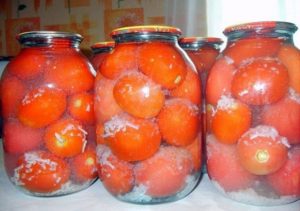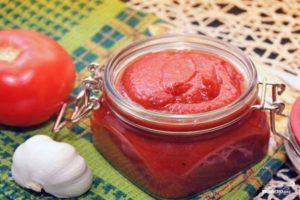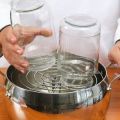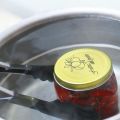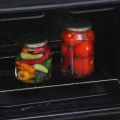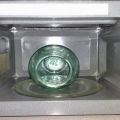How to sterilize jars with blanks correctly in different ways
When preparing pickled and salted foods for the winter, they strive to protect them from spoilage. After all, work often goes to waste, jars of cucumbers, tomatoes, compotes grow cloudy and explode. Therefore, you need to pay attention to how to sterilize jars with blanks correctly.
Is it possible to sterilize jars with blanks
For long-term preservation of winter preparations, sterilization is necessary. This term means heating to the boiling point. Then there is a complete destruction of pathogenic microorganisms or suppression of their vigorous activity. The effect of sterilization depends on the acidity of the product. So, tomatoes have a high acid content, so canned food with them is pasteurized without spending much time.
Zucchini salads will have to be brought to a temperature of 100 degrees and above for a long time. Otherwise, the bacteria botulinus, which is highly toxic to the human body, can develop in them. And the low acidity of zucchini does not allow to suppress the action of bacteria.
The heat treatment of the workpieces depends on the consistency of the winter snack. Liquid foods heat up faster. The container volume also affects the processing procedure. Half-liter cans of caviar hold for 10 minutes, and 3-liter blanks for up to 30 minutes.
Why is it needed
The purpose of sterilization is to prevent spoilage of vegetable products, to extend the period of their use in food. Pasteurization methods are used necessarily in relation to those products that contain liquid. After all, dried mushrooms are not subjected to this procedure, since they do not have an environment for the development of mold. Carriers of toxins cannot develop at low temperatures. The fruits of the garden and garden placed in the freezer for the winter will not deteriorate.
After exposure to high temperatures, the jars of vegetables must be sealed tightly, rolling up with metal lids.
You can pour on top with a layer of hot animal fat, butter. It will not let microbes inside the container, therefore, the neck of the can is tied with parchment paper and cloth on top.
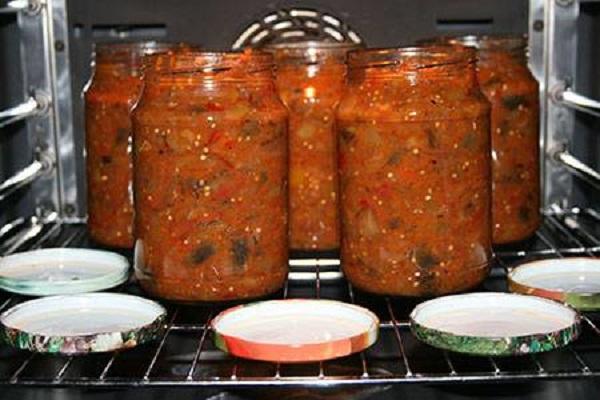
Those canned food that is closed with plastic lids do not require pasteurization.
Sterilization methods
Before you start cooking vegetables for the winter, you should choose a sterilization method and prepare for it. The process will be successful if:
- the container will be without cracks, chips on the neck;
- pick up quality covers;
- rinse the cans with water and baking soda or dry mustard before setting the salad.
There are certain rules for each method that cannot be violated.If the cans with the blanks are kept for less than the allotted time, then the microorganisms will begin their activity after the marinade and sauce have cooled.
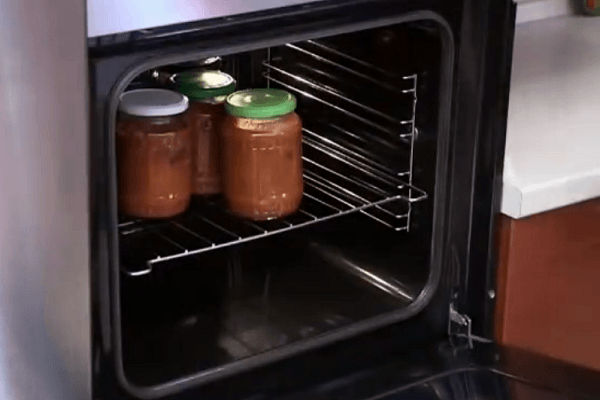
In boiling water
One of the most common and simple methods requires little effort and time. It is carried out by sterilizing cans of blanks in a pot of boiling water. A container is selected that will contain several cans of winter salads. The height of the pan should be such that the water covers the glass container up to the shoulders.
The procedure is carried out:
- putting a wooden or metal stand or a piece of thick cloth on the bottom of the pan;
- putting out cans, covered with lids on top;
- pouring warm water;
- heating water to a boil.
It should be left after boiling water for 10 minutes for half-liter cans, 15 minutes for liter, 25-30 - 2 and 3-liter.
Some foods require temperatures above 100 degrees. This should be achieved by adding salt to the water. So 48% saline will help the water boil at 110 degrees.
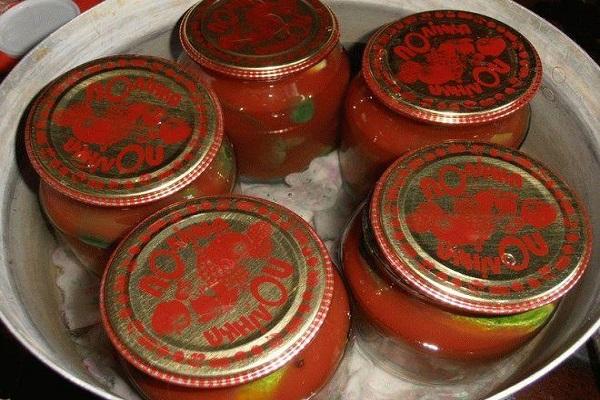
In the oven
It is convenient to sterilize canned food with vegetables in the oven. There is a gradual heating of containers with blanks.
Place jars of hot salads, caviar on a wire rack in a warm oven. The temperature is set first at 100 degrees, then increasing to 120.
The time for the procedure is the same as in boiling water. The larger the container, the longer. For better preservation of conservation, hot workpieces are pulled out and immediately rolled up. To cool down, wrap it with a woolen blanket.
In the microwave
This method is also used frequently. But there is one caveat: you cannot put iron lids on top of the cans. This will cause the microwave to malfunction. You can put the container with the contents open, and disinfect the lids separately in boiling water.
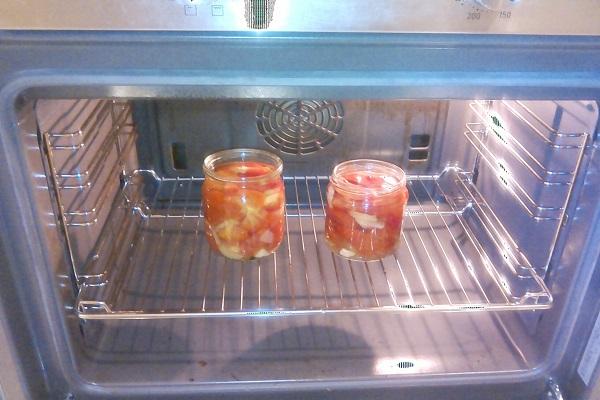
Jars full of vegetable products are displayed all over the oven. It is necessary to turn on at full power so that the salads inside the container boil. They are kept for a time from 10 to 15 minutes, because large containers will not go into the microwave. The device is suitable for sterilizing small cans.
The problem can be that the contents will spill out of the container if it is filled to the brim. This must be taken into account when sterilizing in a microwave oven.
Pasteurization
The difference between pasteurization and other methods is that containers with winter blanks are heated to a temperature of 98-99 degrees before rolling. After all, boiling foods lose vitamins useful for the body. Therefore, during pasteurization, the loss of vitamins is minimal, and the color and taste of the product does not change. In this case, after heat treatment, the vegetables will become ready-to-eat.

At home, it is necessary to pasteurize in a water bath. You will need a tank or a wide pan for the process. Many people use a mantle cooker for pasteurization. You need to put a lid with holes or several layers of cloth in the pan.
Place the jars filled with vegetable mixtures so that they are at a distance of 2-3 centimeters from each other and the metal walls of the tank.
The pasteurization procedure is fast. The water is heated by measuring the temperature with a special thermometer. Then stop heating, maintaining the temperature for 10-25 minutes, depending on the volume of the container.
After the procedure, the blanks are taken out and sealed with lids. Then you need to roll the cans on the table so that they cool faster.
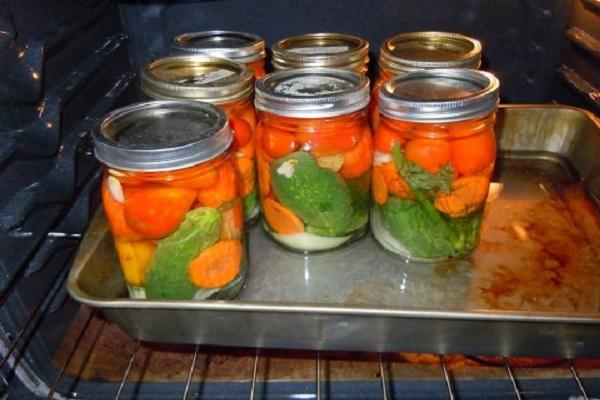
When a preservation defect is found, the product in the container can be pasteurized again. But the processing time will be less than 5 minutes.
If the defect is found quickly, then the rubber gasket is treated with alcohol. And the lid itself is disinfected with burning alcohol. Then they quickly twist, checking its tightness.
It is advised to cool pasteurized canned food in a saucepan with hot water, gradually adding cold water. With this method, the berries will not soften and will retain their integrity.
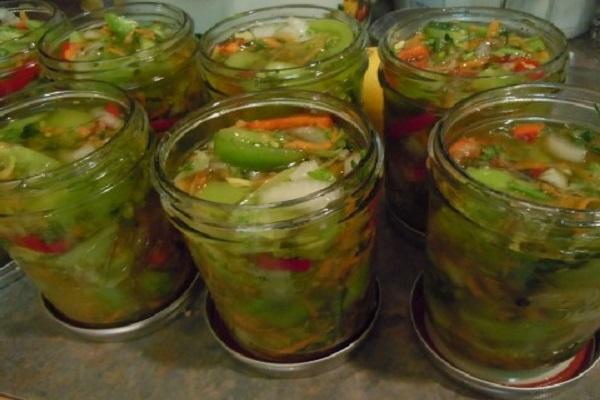
Is it possible to sterilize already rolled jars
It is advised to sterilize and pasteurize in a closed form those jars, for which glass lids with clips are used for sealing. First, a rubber seal is installed on the neck, a lid is placed on top and clamped with a special device. Before twisting, make sure that the seal does not move. You can use 2 clamps, positioning them crosswise.
If ordinary metal lids are used for the tightness of winter canned food using a seaming machine, then such cans are not closed before sterilization. Seaming is carried out after the product has been pasteurized or sterilized.
